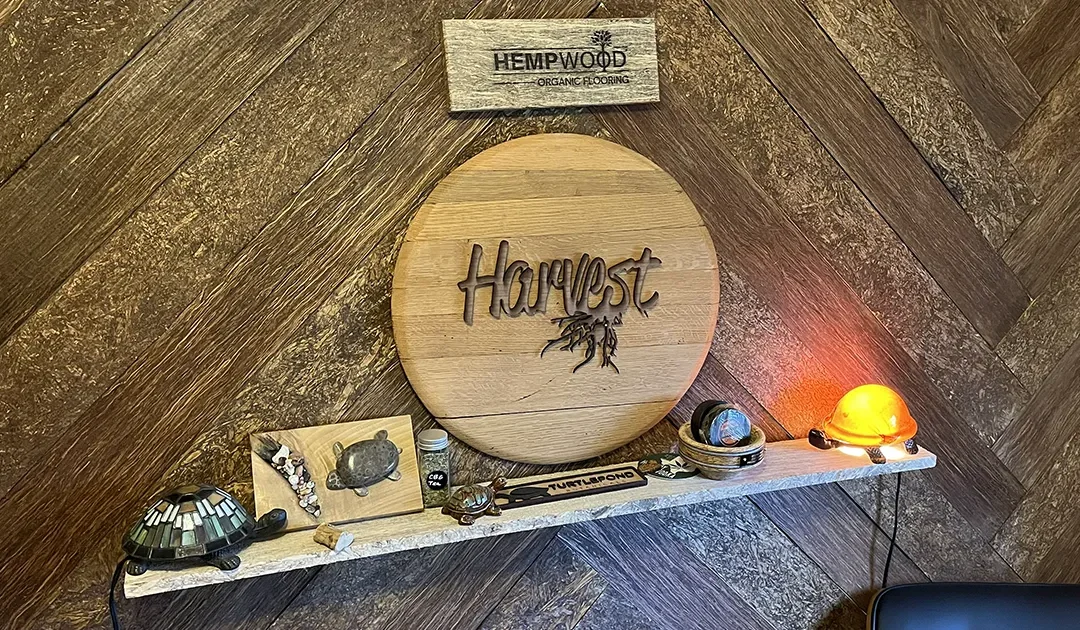What if I told you that one of the most innovative, sustainable, and durable new building materials on the market comes from the same plant as cannabis? It sounds wild, but it’s true. Learn about a fascinating product called Hempwood, and it has the potential to completely change the game for construction, woodworking, and environmental sustainability.
This isn’t your typical lumber. It has a unique, almost tropical look, but it’s 100% American-made from the stalk of a hemp plant. In the video below by DIY With Dave (different Dave), we get a deep dive into how this incredible transformation from a simple plant to a sturdy plank happens and what it could mean for the future.
A Quick History of Hemp
Hemp has been a cornerstone of civilization for thousands of years, used for everything from ropes and sails to clothing and even legal tender in the early American colonies. Even George Washington was a hemp farmer! However, its association with marijuana led to its classification as a Schedule I drug in 1970, making it illegal to grow.
That all changed with the 2018 Farm Bill, which distinguished industrial hemp (containing less than 0.3% THC) from its psychoactive cousin, paving the way for a resurgence of this versatile crop.
How Do You Make Wood from Hemp?
The company at the forefront of this innovation is Hempwood, based out of Kentucky. Their process is a brilliant blend of agriculture and technology:
- Cultivation: They plant about a million hemp plants per acre. These plants mature in just six months—a staggering 100 times faster than an oak tree!
- Processing: After harvesting, the hemp stalks are crushed, soaked in a soy-based, eco-friendly glue, and pressed into massive 6×6 blocks with incredible force.
- Finishing: These “loaves” are then baked, trimmed, and cut into usable lumber, flooring, and other products.
The result is a dense, hard, and beautiful material that is completely free from the formaldehyde and volatile organic compounds (VOCs) found in many other composite materials.
The Good, The Bad, and The Beautiful
So, how does it stack up against traditional wood?
- The Good: Hempwood is incredibly durable. With a Janka hardness rating of around 2200, it’s harder than Oak and Hickory, making it perfect for high-traffic flooring. It’s also a carbon-negative crop, meaning it absorbs more carbon dioxide from the atmosphere than it takes to produce it. Every acre grown removes about two tons of CO2!
- The Look: It’s available in two main patterns: “faceon,” which shows more variation, and “riftsawn,” which has more linear grain patterns. Both are stunning and offer a unique aesthetic for any project.
- The Catch: The primary challenge right now is cost. A board foot of Hempwood is currently more expensive than traditional hardwoods like White Oak. However, as a new company, prices are expected to come down as they scale up production and refine their processes.
The Future is Green
I believe Hempwood is more than just a novelty; it’s a glimpse into the future of sustainable building. It’s an American-made, eco-friendly, and highly durable product that supports farmers and reduces our reliance on old-growth forests. While it may be a premium choice for now, its environmental and health benefits make it a compelling option for flooring, furniture, and other woodworking projects.
I dedicated a wall of my office to Hempwood as a beautiful accent piece to demonstrate a cool way to use this amazing resource.

What do you think?
Would you consider using Hempwood in your next project?
Let me know in the comments below!

